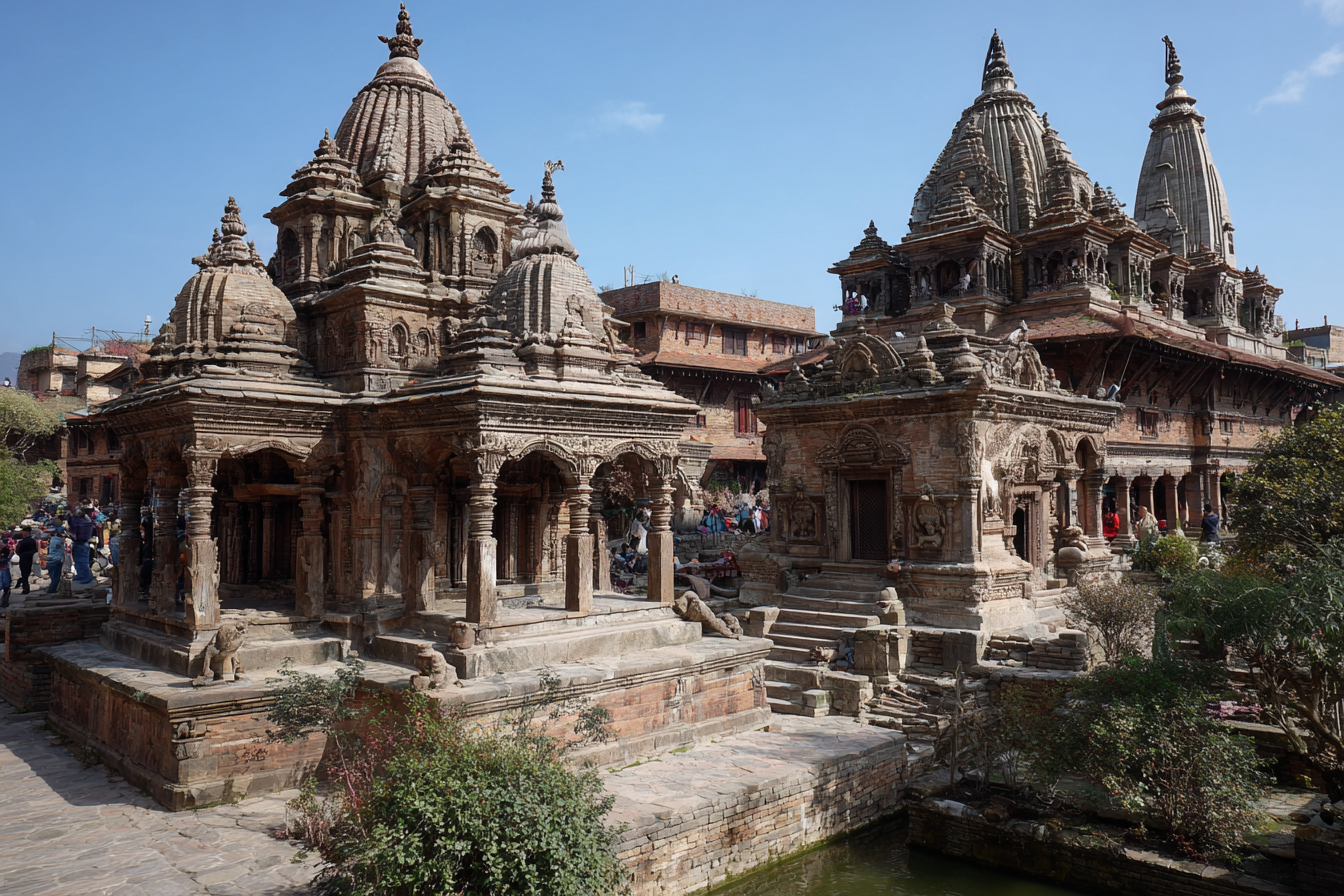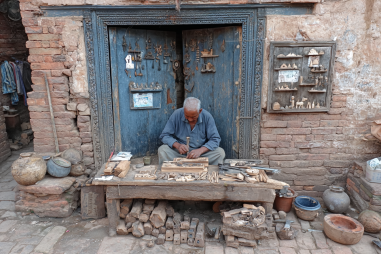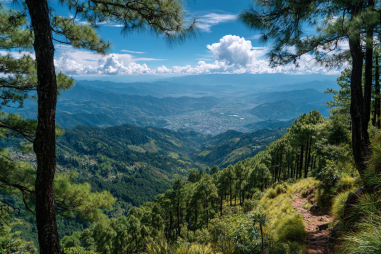Nestled in the heart of Nepal, Bhaktapur is a living museum of art, culture, and history. Known for its impressive array of well-preserved monuments, the city was designated as a UNESCO World Heritage site, highlighting its importance not only to Nepal but to the world. This recognition brings with it global awareness of the city’s rich Nepalese heritage and a commitment to preserving these treasures for future generations. Let’s embark on a journey through Bhaktapur’s UNESCO heritage sites to discover their historical significance, architectural brilliance, and the unique stories they carry.
Understanding the UNESCO World Heritage Designation
The UNESCO World Heritage designation is granted to places of outstanding cultural or natural importance to humanity. When a site achieves this status, it signifies its exceptional value and the necessity to conserve it. Bhaktapur, along with other cities in the Kathmandu Valley, earned this recognition due to its stunning representation of Newar architecture and urban design, dating back to the Malla period. These sites offer insight into the social, religious, and artistic traditions of the region, making them invaluable on a global scale.
Overview of Bhaktapur’s World Heritage Sites
Bhaktapur is renowned for its densely packed collection of monuments and buildings that have survived centuries, including palaces, temples, courtyards, and squares. The entire Durbar Square area, which functions as the city’s historical core, is a UNESCO listed heritage site, encompassing a rich tapestry of these architectural marvels.
Bhaktapur, along with Kathmandu and Patan, forms part of the Kathmandu Valley World Heritage Site, recognized for its exceptional blend of ancient pagoda-style temples, intricate woodwork, and stone sculptures. While Bhaktapur’s entire historical core is protected, several individual monuments stand out for their distinctive beauty and cultural significance.
Historical and Cultural Importance
Bhaktapur was once the capital of Nepal during the Malla dynasty from the 12th to the 18th century. It played a crucial role in the country’s political, cultural, and religious development. The city’s architecture reflects the artistic achievements during this golden era, combining elements of Hinduism and Buddhism that reveal the syncretism of Nepalese spirituality.
Its temples, palaces, and squares have been centers for festivals, rituals, and everyday community life for centuries. The city’s layout and the relationships between these historic structures embody the essence of Newar civilization’s urban planning and social organization. As a cultural hub, Bhaktapur is a living example of how history and tradition have been preserved even as modernity advances.
Highlighted Monuments and Their Stories
Several monuments within Bhaktapur’s UNESCO heritage zone stand out for their unique stories and architectural splendor:
Bhaktapur Durbar Square
The heart of the city, Bhaktapur Durbar Square is a sprawling complex filled with temples, palaces, and courtyards. One of the most famous is the 55-Window Palace, built in the 15th century, named for its exquisite lattice windows that exemplify Newar craftsmanship. The Vatsala Temple nearby, with its elegant stone architecture, is an exquisite example of Shikhara style, distinct from the typical pagoda temples of the region.
Nyatapola Temple
Standing tall at five stories, the Nyatapola Temple is the tallest pagoda-style temple in Nepal. Built in the early 18th century, it is dedicated to the goddess Siddhi Lakshmi. Its name literally means “five tiers,” signifying the five levels of the temple, each supported by stone statues of mythical creatures and guardians. The temple symbolizes strength and resilience, having stood strong even after major earthquakes.
Taumadhi Square
Another jewel of Bhaktapur is Taumadhi Square, where the architectural marvel of the Nyatapola Temple dominates. This square also houses the Bhairavnath Temple, famous for its bright red facade and lively religious activities. Taumadhi acts as a social and cultural gathering place for festivals and traditional ceremonies throughout the year.
Pottery Square
Beyond the grand temples and palaces, Bhaktapur is famous for its thriving pottery community. Pottery Square is both a workshop area and a marketplace where visitors can witness the age-old craft of pottery-making, continuing a tradition that has been passed down for generations. It’s a vibrant space that reflects Bhaktapur’s living culture, linking craft, commerce, and heritage.
Visitor Information
Bhaktapur is easily accessible from Kathmandu and makes an enriching day trip or extended visit. To explore the UNESCO heritage sites thoroughly, it’s best to wander the city on foot. The compact layout means that many key sites are within walking distance of each other, allowing visitors to absorb the atmosphere fully.
Opening hours for key monuments typically range from early morning to late afternoon. Entrance fees are required for many heritage sites, which contribute to the conservation efforts. Local guides are readily available and highly recommended to enrich the experience with detailed stories and historical context.
- Best Time to Visit: October to March for pleasant weather
- Entry Fee: Approximately $15 USD for foreign tourists (subject to change)
- Recommended Duration: At least 4-6 hours to cover major sites
- Facilities: Cafés, souvenir shops, and rest areas are scattered across the city
Preservation Challenges
Despite its UNESCO status and widespread recognition, Bhaktapur’s heritage sites face ongoing challenges. Natural disasters, such as the devastating 2015 earthquake, caused severe damage to many monuments. Restoration efforts have been commendable but require ongoing resources and expertise.
Besides natural threats, urbanization and increased tourism put pressure on the infrastructure and fragile historical structures. Balancing modern development with heritage preservation requires careful planning and community involvement. UNESCO, the Nepalese government, and local organizations continue to collaborate on programs to protect Bhaktapur’s cultural legacy while providing sustainable tourism that benefits local communities.
Moreover, educating visitors about responsible tourism and encouraging practices that respect the sites is part of the preservation strategy. Sustainable development remains a priority to ensure Bhaktapur’s ancient wonders continue to inspire future generations.
Embracing Bhaktapur’s Timeless Heritage
Walking through Bhaktapur’s UNESCO heritage sites is like stepping back in time to a world of exquisite craftsmanship, rich culture, and enduring traditions. Each temple, palace, and courtyard tells a story of Nepal’s vibrant past and the artistic genius of its people. Whether you are a history enthusiast, an architecture lover, or a curious traveler, Bhaktapur offers an unforgettable experience that celebrates human creativity and resilience.
The city stands as a testament to the importance of preserving cultural heritage in a rapidly changing world. By exploring Bhaktapur’s UNESCO sites, visitors don’t just witness history—they become part of an ongoing story dedicated to safeguarding one of Nepal’s most treasured legacies.







